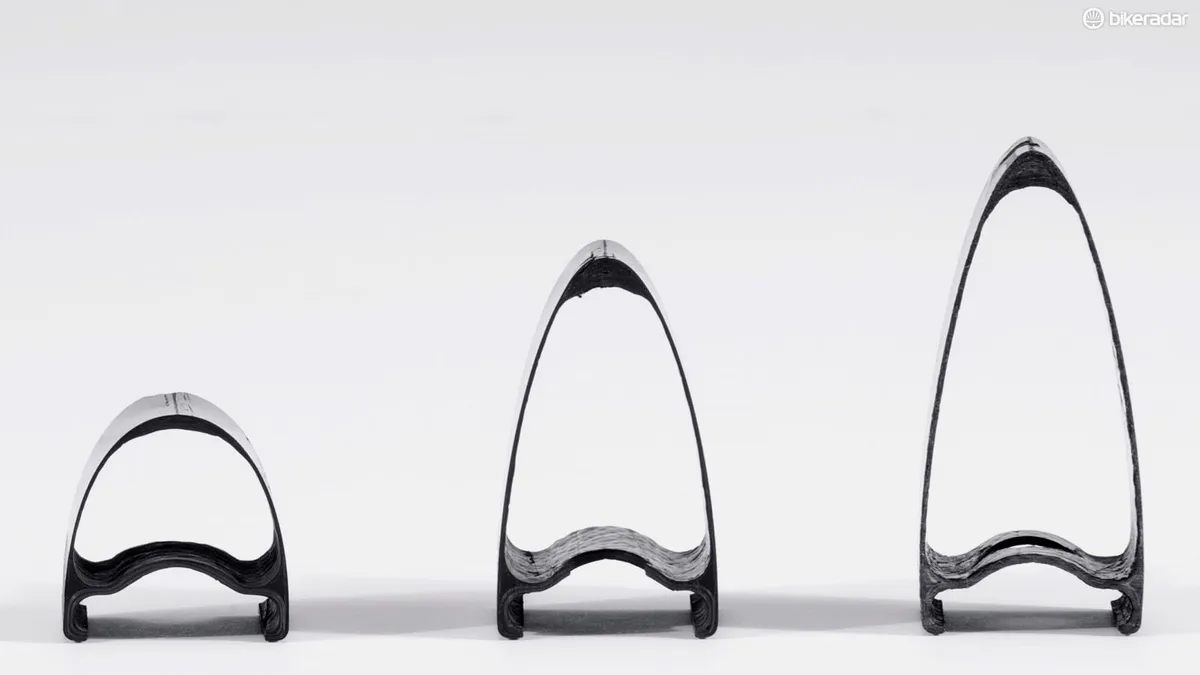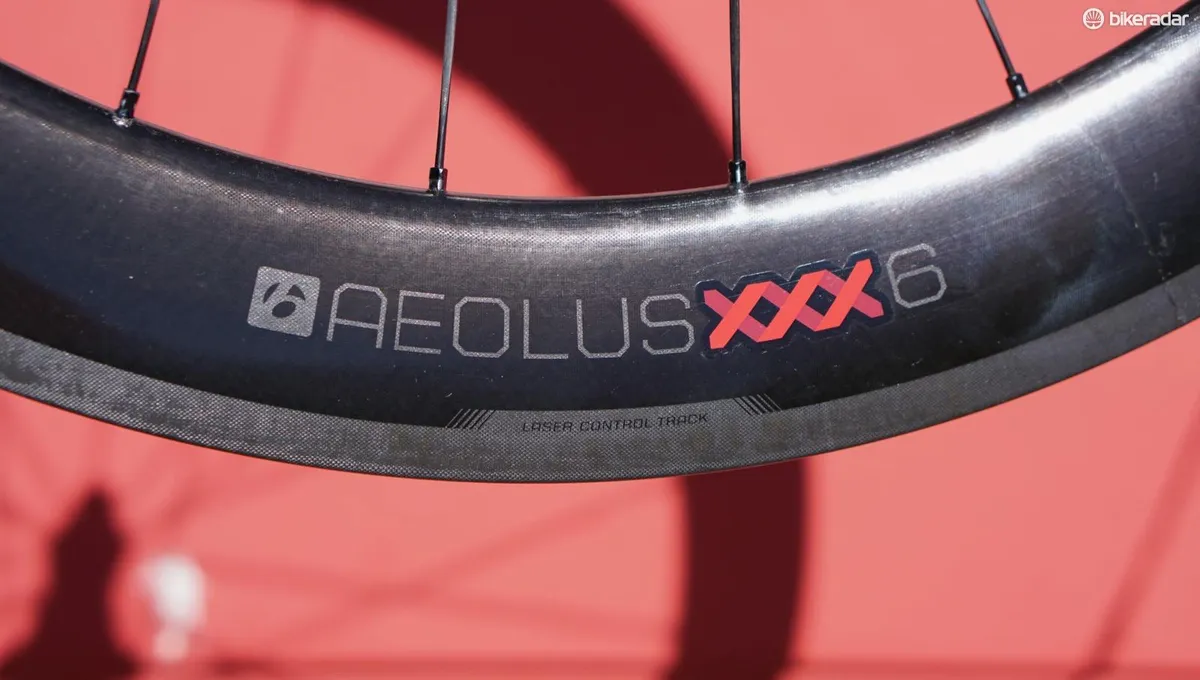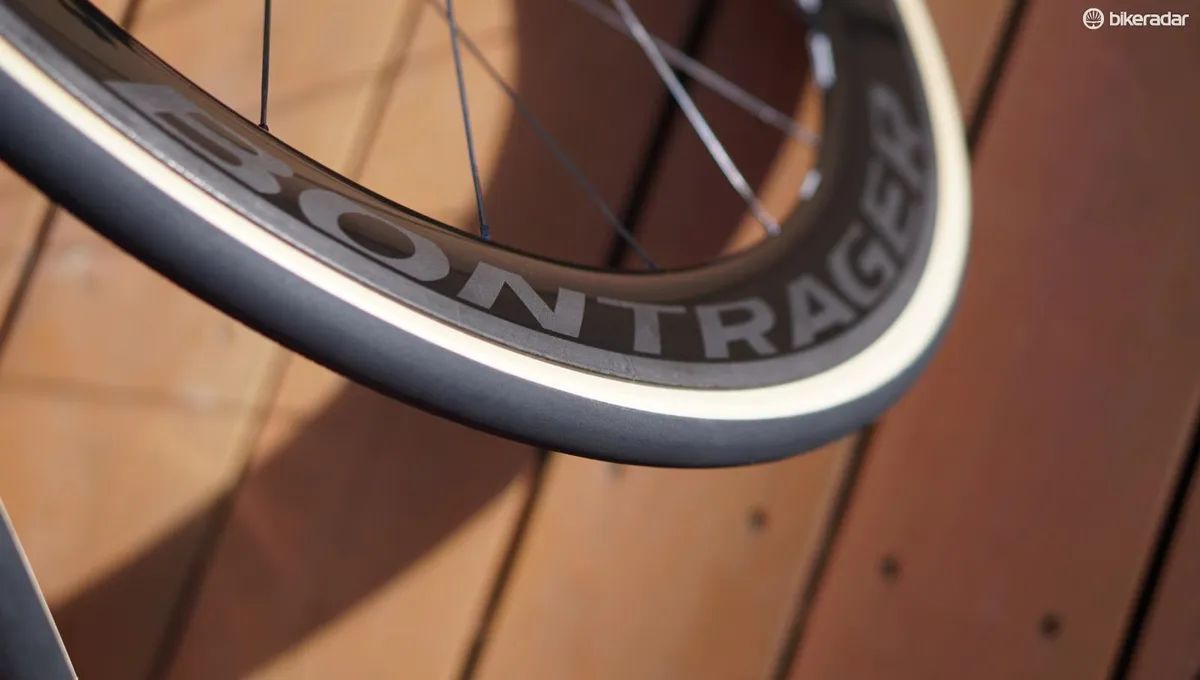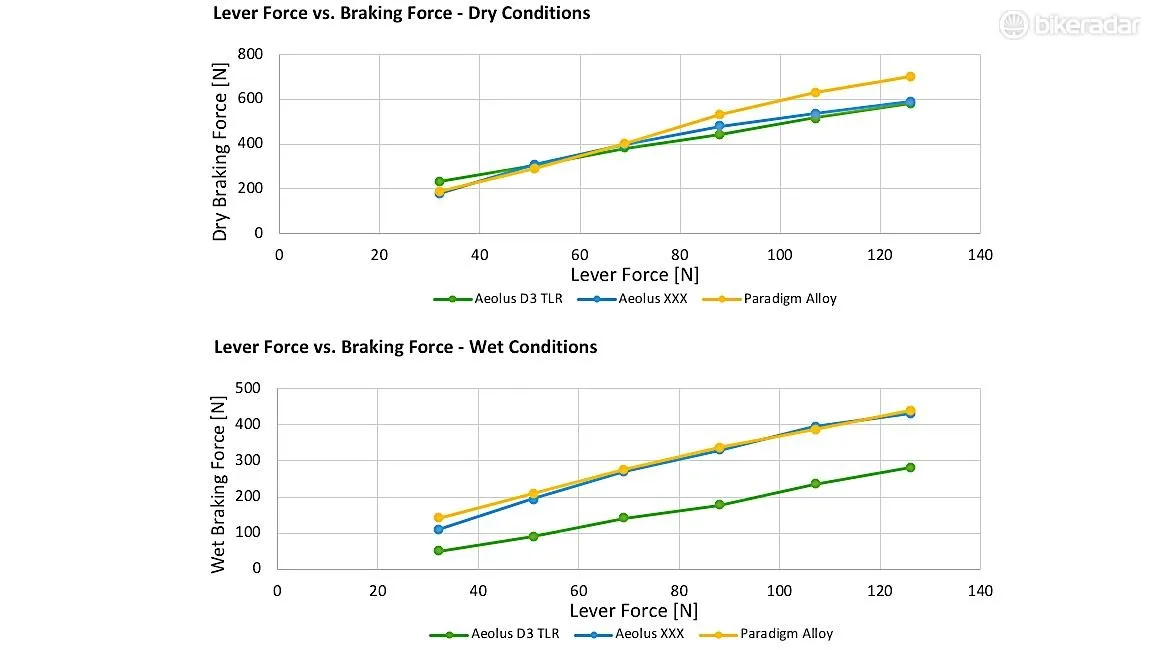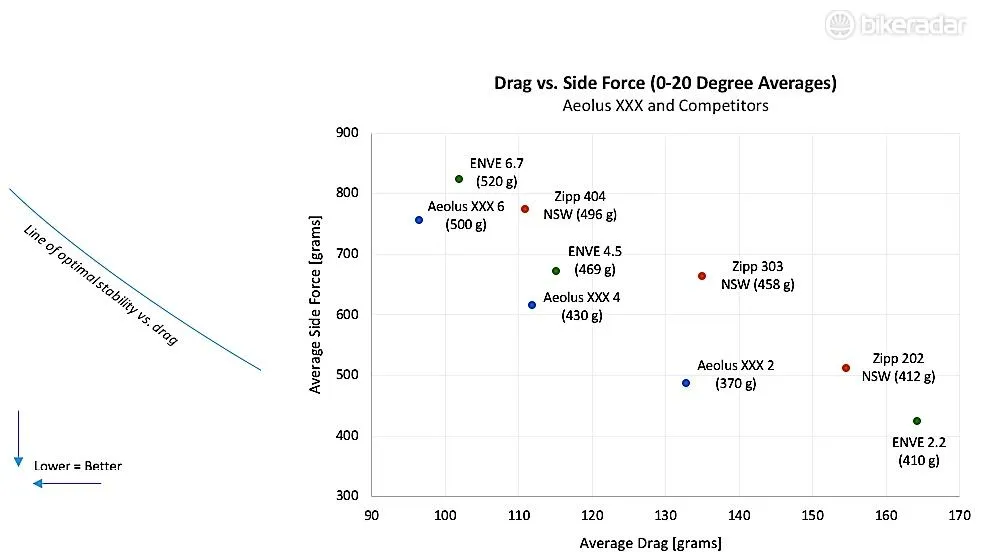Bontrager’s new Aeolus XXX wheels are faster and more stable than comparable models from Zipp and ENVE, the Wisconsin company claims.
Trek and Bontrager engineers spent more than two years on the project, incorporating FEA, CFD, optimization software, wind-tunnel work and feedback from pro riders. Some 10,000 potential rim shapes were analyzed, the company claims.
By melding engineering work with real-world analysis — like having test riders flag points in rides where they felt unstable and crosschecking that against wind and side-force data — Bontrager claims it now has the best all-around wheels you can buy.

Building on the Aeolus D3 wheels launched in 2011, Bontrager spent two years developing the latest Aeolus XXX line of aero wheels that come in 28mm, 47mm and 60mm rim profiles. The wheels have a whopping 21mm internal-rim width and 27mm or 28mm external brake-track widths but a more pointed shape than the snub-nosed spoke bed we have come to expect from wheels with a ‘stable in the crosswind’ claim.
The wheels also have a new textured brake track.
Quantifying ‘stable’ on the road
“One thing we often heard was, the deeper the wheel, the less confident riders felt,” said Bontrager chief engineer Eric Gertner. “It seemed like there was no way around it. But [engineers] Claude Drehfal and Mio Suzuki came up with a way to optimize for speed and stability.”
The project began with a research study to understand stability. While weight, deflection and even aerodynamic drag (given set parameters) are fairly straightforward to measure, what ‘feels stable’ is not.
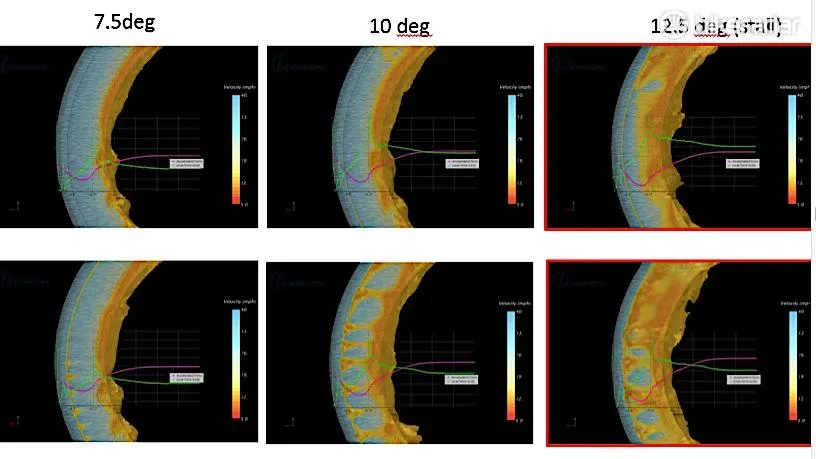
“We noticed two things with deep wheels in the wind: You feel like you’re being blown over, and you feel the wind is grabbing the front-wheel steering,” Gertner said.
To put numbers on things, Bontrager engineers went to a wind tunnel and took measurements of side force and different torques put onto different rim shapes at certain yaw angles.
Next, they sent test riders out on an instrumented bike that measured wind speed and yaw during their rides. Whenever they felt unstable, the test riders would hit a button to record the moment, then after the ride engineers would correlate those with tunnel data for side torque.
Bontrager engineers determined that moments of instability don’t just occur when a wheel stalls (when airflow breaks free from the wheel), but also when there is a gust or a change of direction in the wind.
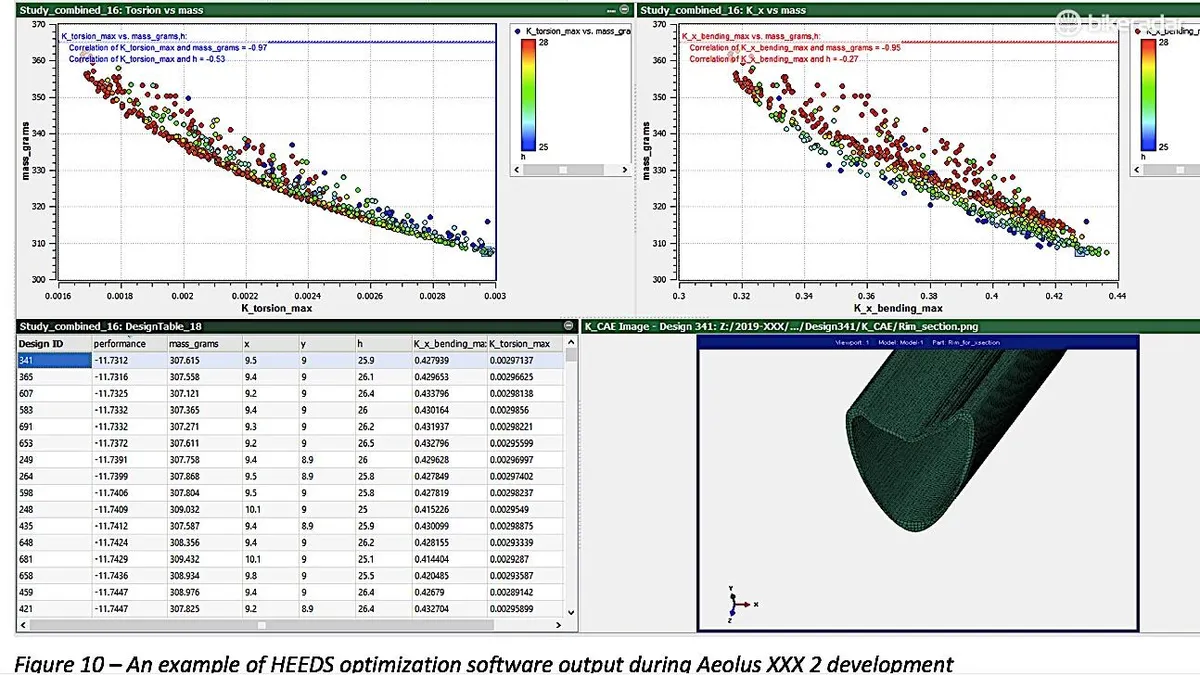
The engineers defined instability as anything that caused a steering torque of .75N-m or greater in less than 1.4 seconds. Then they designed around that, while still trying to make the wheel as fast as possible in a variety of wind angles.
“We tried to minimize side force, as that has the largest impact of steering force overall, while minimizing drag at the same time,” Drehfal told BikeRadar.
Bontrager used a HEEDS parameterized optimization software that integrated with their CAE tools. Some 10,000 potential shapes were analyzed, Bontrager claims.
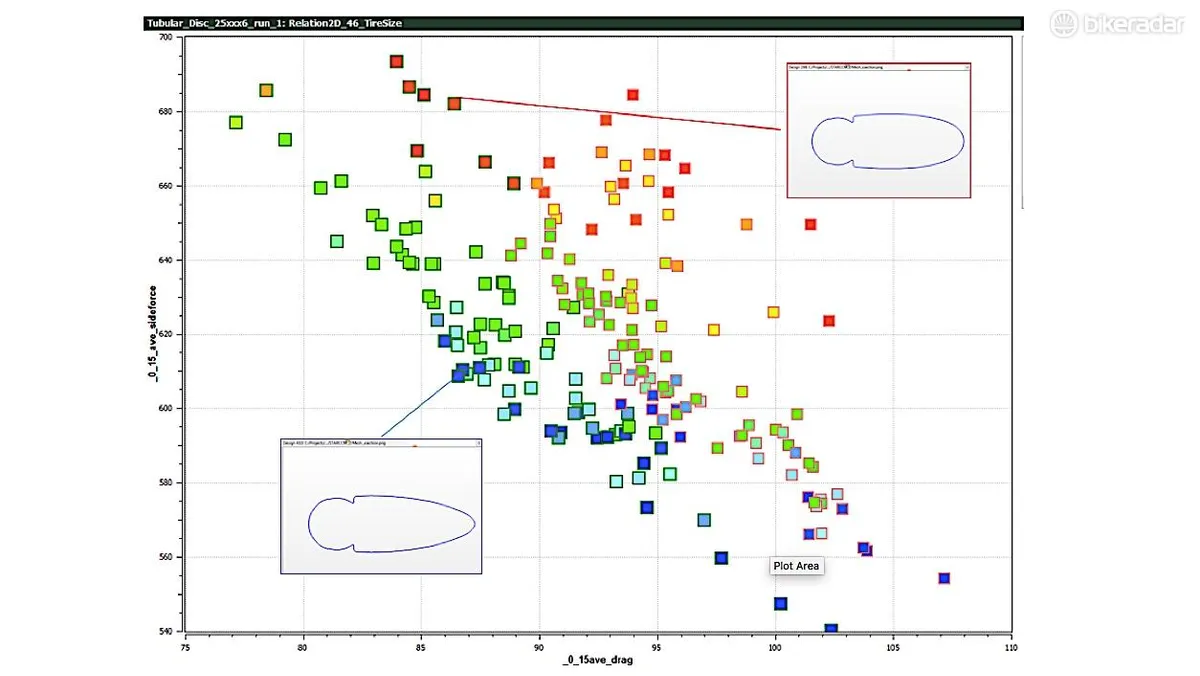
Wind tunnel confirmation
After Bontrager had the wheel designs fairly dialed in, the engineers went back to the wind tunnel.
“The first step is a really good CAD model,” he said. “We need to start with something good in the wind tunnel. We looked at how outer and inner rim width will affect drag. Then we optimized shape parameters of the rim.”
All the wheels were optimized around a 25mm tire, which acts as a nose cone when nestled inside the 21mm wide rim, which is 27mm wide at the brake track for the 2 and 4 and 28mm wide for the 6.
Previous Aeolus D3 wheels had a 19.5mm internal rim width and a 27mm max outer width.
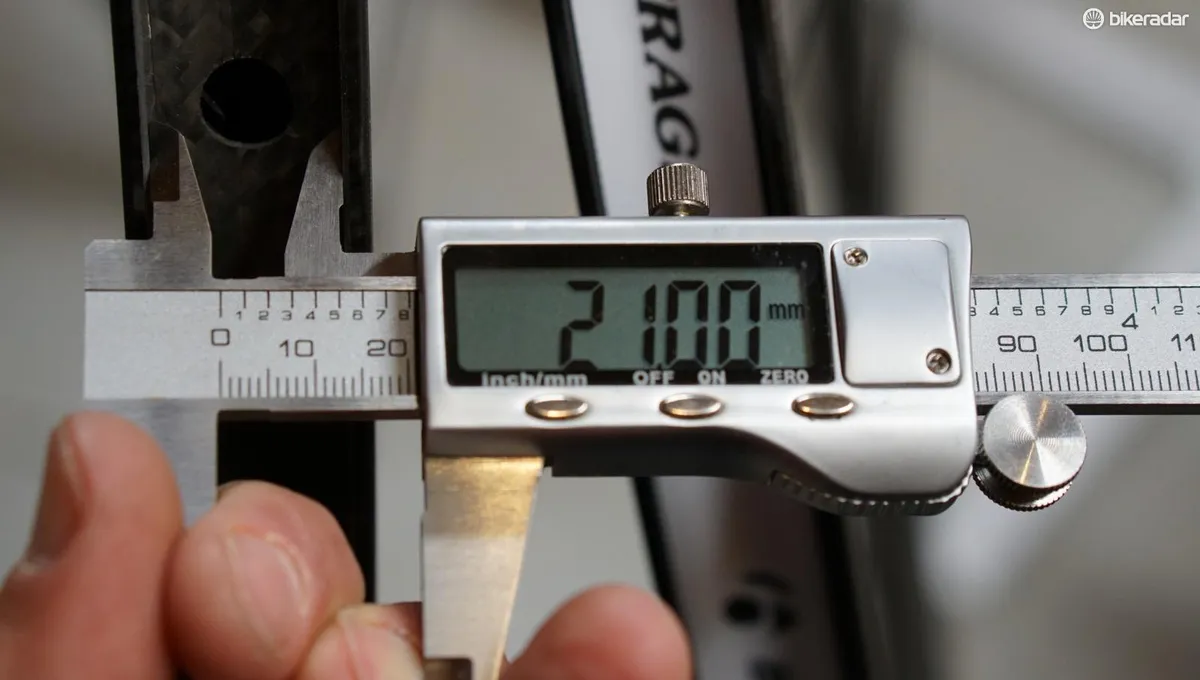
“We cut prototypes in alloy or plastic of our three best shapes, within less than .2mm,” he said. “And then we used the tunnel to confirm what we measured in CFD.”
The end result, the company claims, is a wheel with the lowest side-force-to-drag ratio of anything on the market.
So, for example, the XXX 6 has a claimed side force of 750 g at less than 100g of average drag across 0-20 degrees, compared to ENVE 6.7’s 800 g at more than 100g drag or Zipp 404’s 750 g and more than 110g of drag. All these figures are according to Bontrager measurements.
Lower-profile wheels in general have higher drag and lower side force, but here Trek also claims its Aeolus XXX design trumps the competition.
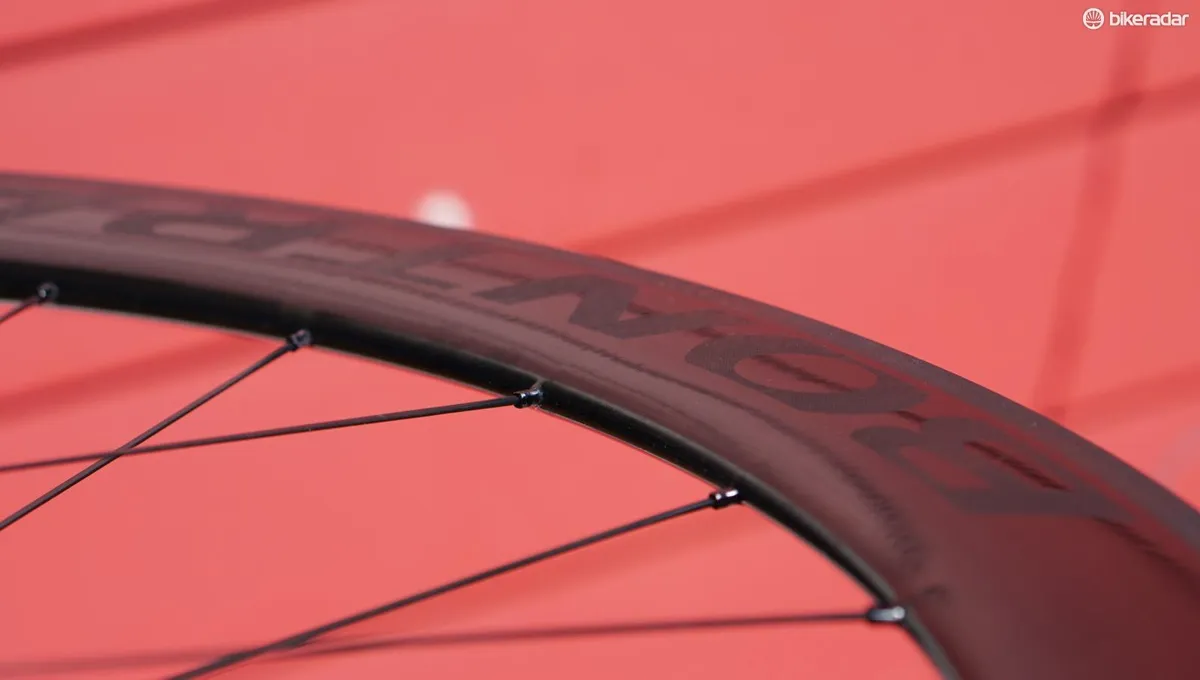
Weight, stiffness and braking
Although reduced drag is the primary point of aero wheels, Bontrager and other companies certainly pay attention to the other characteristics that affect the ride: weight, stiffness, strength and braking.
Claimed rim weights for the Aeolus XXX are 370g for the 2, 430g for the 4 and 500g for the 6. Compare those to Zipp’s 412g 202 NSW, 458g 303 NSW and 496g 404 NSW. Total wheelset weights are slightly lower for the Bontrager than the Zipp wheels, according to Bontrager.

Bontrager engineers said the layups were designed for a stiff wheel that didn’t feel harsh.
A new laser-etched brake track brings wet and dry braking performance in line with alloy rim-brake models, Bontrager claims, without any squealing or loud noise. The textured surface is designed to work with SwissStop Black Prince pads.

DT Swiss internals – and hub options
All the wheels come with DT Swiss hub internals, including the 36-point star ratchet engagement in the rear hub.
The wheels come in clincher and tubular rim-brake models, plus disc-brake models in all three rim depths.

Aelous XXX pricing, weights and availability
Unlike some companies that launch a product well ahead of its availability, Trek has established a pattern of launching the day something goes on sale, and the Bontrager Aeolus XXX wheels are no different. The Aeolus XXX wheels are available now, in clincher and tubular rim-brake models, as well as disc-brake models, for the 2, 4, and 6 rim depths.
Pricing for all wheelsets is £1,999 / $2,399 / €2,399.
Wheelset claimed weights are as follows.
Aeolus XXX 2 TLR – 1,305g 2 Tubular - 1,150g
Aeolus XXX 2 TLR Disc – 1,380g 2 Tubular Disc - 1,230g
Aeolus XXX 4 TLR - 1,400g 4 Tubular - 1,270g
Aeolus XXX 4 TLR Disc – 1,455g 4 Tubular Disc - 1,330g
Aeolus XXX 6 TLR – 1,530g 6 Tubular - 1,380g
Aeolus XXX 6 TLR Disc – 1,600g 6 Tubular Disc - 1,455g
